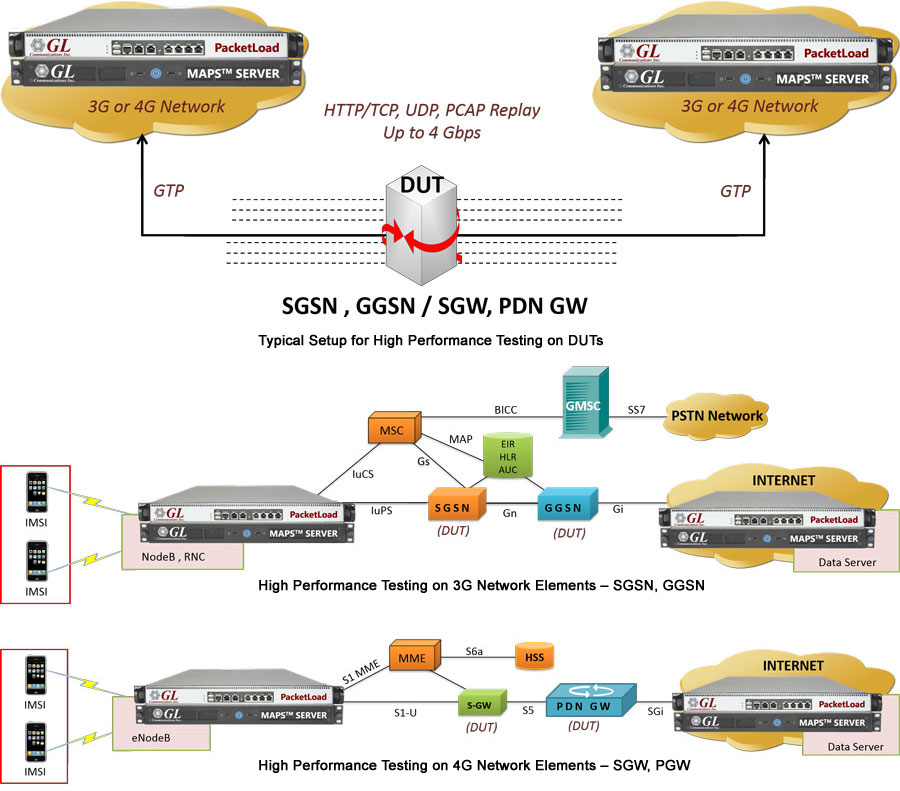High Volume Mobile Data Traffic Generation over LTE, UMTS, & GPRS Networks
Gaithersburg, Maryland, USA - October 19, 2015 - GL Communications Inc., announced today its latest product High Density GTP Traffic Simulator referred to as ‘PacketLoad’ that is used for simulation of high volume of mobile data traffic (also referred to as user plane traffic) over LTE, UMTS, and GPRS networks.

Speaking to the media, Mr.Jagdish Vadalia, a Senior Manager of product development of the company said, “As traffic intensity increases, network elements within wireless network (including switches, routers, gateways and transmission) can impart various impairments: errors, excessive delay, congestion, blocking, loss, and degrade quality.
The aforementioned network elements’ ability to handle huge traffic requires proper test and verification methods.
Simulating high volume of mobile data traffic is extremely valuable to analyze the network elements characteristics as a function of traffic intensity and traffic type (e.g. Voice, Fax, Data, Video). For such a test requirement, we can now use GL’s PacketLoad network appliance that works with MAPS™ signaling and traffic simulator software to generate high volume of Mobile GTP and Packet Traffic ( up to 4 Gbps) over any Wireless network (LTE, UMTS, and GPRS).”
He added, “GL's PacketLoad is a high density packet traffic generation module that generates stateful TCP/HTTP, UDP, and PCAP Replay traffic and provides a "real-world" traffic conditions in the lab. It is a 1U network appliance that includes 4 x 1GigE Ethernet ports supporting total capacity of up to 4 Gbits/sec stateful packet traffic generations.
PacketLoad supports user plane packet transmission and reception services between any two nodes (GTP-U protocol entity) in UMTS (SGSN, GGSN, RNC), and LTE (SGW, PDNGW) networks. The appliance works with MAPS™ LTE S1, MAPS™ LTE eGTP-c, MAPS™ UMTS Gn Gp, MAPS™ IuPS applications.”
Mr. Vadalia further explained, “The packet traffic can be generated with GL's MAPS™ UMTS / LTE simulators along with PacketLoad module that allows encapsulation of the generated packet data within GTP headers and transmit through the gateway points such as SGSN & GGSN, or SGW & PGW. GL’s MAPS™ along with PacketLoad allows simultaneous simulation of multiple sessions per user.
When User Equipment (UE) attaches to the network for the first time, it will be assigned default bearer which remains as long as UE is attached. Default bearer is best effort service. In addition to default bearer, dedicated bearers can be established for applications, which require guaranteed QOS (i.e Voice & Video). On successful dedicated bearer establishment all network elements in access & packet core must ensure negotiated QOS is met. PacketLoad can be used in testing the network elements by generating & validating the traffic below or above the negotiated QOS. Currently, PacketLoad supports HTTP traffic simulation with the base requirements such as port number, server IP address, and pre-canned HTTP traffic file.”
He further added, “MAPS™ provides useful statistics to verify the simulated mobile data traffic like total packets transmitted and received, latency, delay, bandwidth, number of tcp connection created, successful connections, packet loss and so on.”
 Back to Press Releases Index Page
Back to Press Releases Index Page